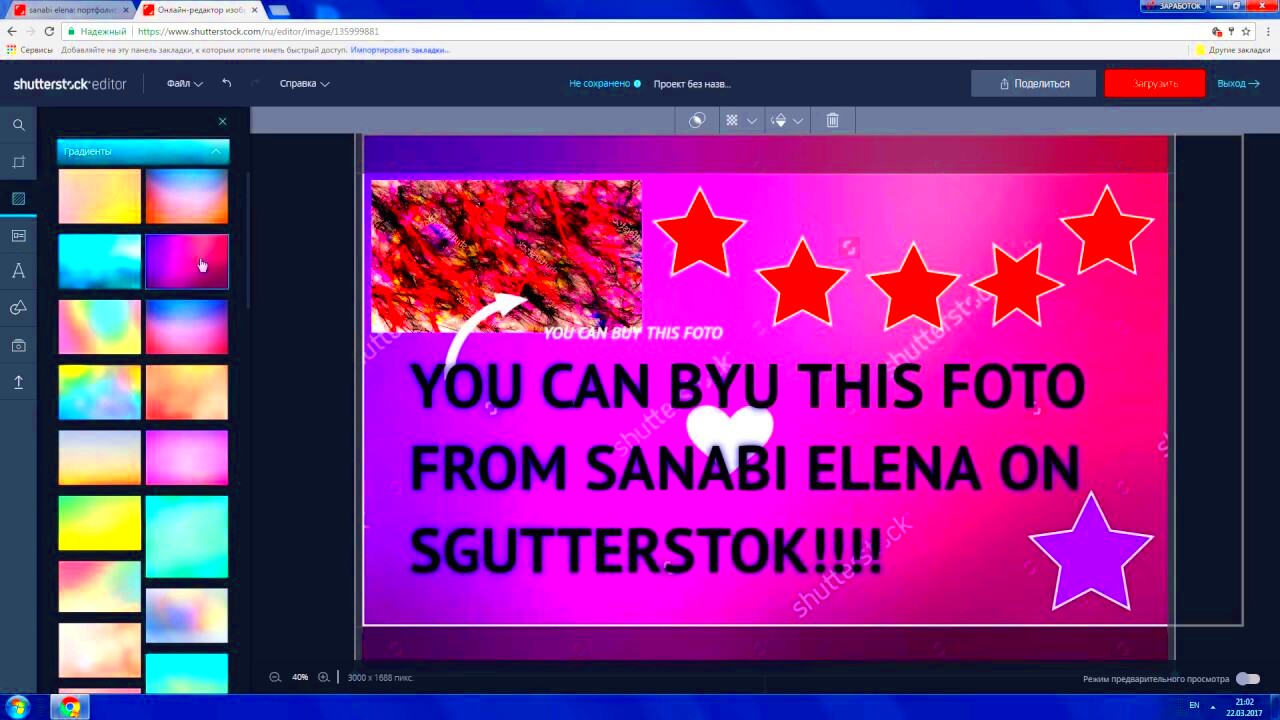Have you ever thought about the journey your photos take after you upload them to
Shutterstock? I still recall the mix of excitement and nerves I felt when I first submitted my work to the platform. It’s like sharing a part of yourself with the world and hoping it finds a place.
Shutterstock is a marketplace and once your images are on there they can be utilized by individuals and businesses worldwide.But what comes next? Let's explore how you can gain insights into the usage and reach of your photos after they are uploaded.
Understanding the Rights of Your Photos on Shutterstock
When I first shared a picture on
Shutterstock I found myself wondering about the ownership of the image. Do I still have a say in it? Its a question that many contributors ponder. The positive aspect is that you maintain ownership of your pictures while granting
Shutterstock the permission to license them to others. In essence you allow them to distribute your creation but it remains yours.
There are different types of licenses:- Standard License: This is the most common. Your photos can be used for things like websites, blogs, or social media.
- Enhanced License: Here, your images can be used for products like t-shirts or packaging. These are for larger-scale projects.
Make sure to go over the licensing terms carefully. I found this out the hard way when I discovered that my picture was being used in a bigger campaign without my knowledge. Its always best to be aware of things in advance. To sum it up
Shutterstock assists in getting your creations in front of potential customers but you also have a say, in their usage.
How to Track Your Photo's Usage on Shutterstock
As a photographer one of the most fulfilling experiences is witnessing your photos in action. But how can you uncover the destinations of your images? I remember being taken aback when a friend shared a screenshot of my picture featured in a magazine. It was an moment. Fortunately
Shutterstock provides methods to monitor the usage of your pictures although the process isn't always straightforward.
Here’s how you can start tracking:- Check Your Sales History: Shutterstock provides a dashboard where you can see which of your images have been downloaded and where they’re being used. It’s a simple way to keep an eye on your work.
- Google Reverse Image Search: This is a handy trick. Upload your photo to Google Images, and it will show you where else it appears online. I've found my photos in unexpected places using this tool.
- Social Media Monitoring: Sometimes, your images might end up on social media. By setting up alerts or just casually scrolling, you might come across your work being shared.
Keeping tabs on how your photos are used can be thrilling and comforting. It's a chance to maintain a bond with your work as it travels through the internet. I remember the moment I spotted one of my pictures in an ad I couldn't help but grin. Your images hold a special place in your heart and they're out there leaving their mark.
Steps to Download Photos from Shutterstock
Downloading images from
Shutterstock may appear to be a process at first glance. However during my initial attempt I was taken aback by the range of choices and steps involved. Its not merely a matter of clicking on a button. You have to grasp the intricacies of licenses, resolution options and even file formats. Allow me to provide you with an overview to enhance your experience.
Step-by-step guide to download:- Create an Account: First, you'll need to create an account on Shutterstock. Trust me, it’s quick, and once you do it, you'll have access to millions of images at your fingertips.
- Choose the Right Subscription: Shutterstock offers different subscription plans. If you're going to download regularly, it might be worth investing in a monthly or yearly plan. Otherwise, you can go for pay-per-image, which I’ve found useful when I needed just one or two specific images.
- Search for Your Image: Use the search bar to type in keywords related to the image you need. You can filter by orientation, image type, and even color, making the search much easier.
- Select the Image and License: Once you find your image, select the appropriate license. Remember, there’s a difference between a standard license and an enhanced one. If you’re planning to use the photo for commercial products, go for the enhanced license.
- Download the Image: After selecting your license, you can now choose the resolution—small, medium, large, or vector (if available). Once selected, click 'Download,' and there you go!
I was really impressed by the level of freedom Shutterstock offers when I initially downloaded some images. Whether you're a designer or simply searching for a picture for a project the platform makes things quite easy to navigate once you become familiar with it.
Protecting Your Photos: Tips for Managing Copyright
I can recall an instance when a photo of mine was used without consent. It felt like someone had taken a part of my creative work without showing any appreciation. That moment made me understand the significance of actively safeguarding copyrights. Protecting your images goes beyond stopping misuse; it's about making sure your creations receive the recognition they merit.
Here are some tips to help safeguard your pictures.- Watermark Your Images: Adding a watermark is a simple but effective way to deter people from using your photos without permission. It’s like signing your artwork.
- Register Your Photos: If you’re serious about protecting your work, register your images with a copyright office. This provides legal backing if someone misuses your content.
- Use Metadata: Embed your name and copyright information in the image file’s metadata. It may not be visible, but it’s there, and if someone tries to use your image, they’ll know it’s copyrighted.
- Stay Vigilant: Regularly check where your images are being used. You can use reverse image search tools to track this. I’ve found this very useful for keeping tabs on my photos, especially after I had a couple used without proper credits.
- Set Up Alerts: Google Alerts is a handy tool. Just set up an alert with your name or the image name, and you’ll be notified when your work appears online.
Dealing with copyright issues may seem complex but it's essential. Your pictures are your creative work and they should be treated with respect. You also deserve recognition for your creations. Speaking from personal experience I can assure you that taking these precautions brings a sense of reassurance.
Benefits of Monitoring Your Photo’s Usage
Keeping tabs on how your photos are used is similar to watching your creation journey across the globe. I once stumbled upon one of my pictures being featured in a promotional campaign for a product I had never heard of before. It was an experience that was both peculiar and intriguing. However it also made me recognize the significance of monitoring the whereabouts of my work.
Here are some key benefits of monitoring your photo’s usage:- Ensuring Proper Credit: When you track your photos, you can ensure that the right credit is being given. There’s nothing worse than seeing your work used without any mention of your name.
- Maximizing Revenue: If your photos are being used frequently, it might be time to rethink your licensing strategy. Are you earning what you deserve? Monitoring usage helps you assess this.
- Building Professional Relationships: I’ve had companies reach out to me directly after using my photos, leading to paid collaborations. If you know who is using your work, you can open doors to new opportunities.
- Understanding Your Audience: Seeing where your photos are being used gives you an insight into who finds value in your work. This can help you tailor future projects or target a specific market.
- Protecting Your Rights: By actively monitoring, you can take action if your photo is being used without permission. It's always better to be aware rather than finding out too late.
Keeping track of how your photos progress is similar to witnessing your child thrive and achieve milestones. It gives you a feeling of satisfaction and mastery over your own work. In this era saturated with visuals this habit is not just an advantage but an essential aspect for those who are dedicated to their art.
Frequently Asked Questions
Throughout the years, I've found myself pondering the ins and outs of Shutterstock, particularly regarding my personal images. Below are a few frequently asked questions I've come across that I believe will assist in dispelling any uncertainties you may have.
1. Do I still own my photos after uploading them to Shutterstock?
Absolutely! One aspect I valued from the start is that Shutterstock doesn’t claim ownership over your pictures. You’re just granting them the permission to license your visuals to clients while retaining the copyright for yourself.
2. How do I know if someone has used my photo?
Shutterstock offers a feature that lets you view the sales history of your photos including the number of downloads. If you're interested in finding out where your images are being used you could try using Google Reverse Image Search or keep an eye on social media platforms yourself.
3. Can I remove my photos from Shutterstock?
Absolutely, you have the option to delete your pictures from Shutterstock whenever you wish. I found it quite simple to remove some of my older ones using the contributor dashboard. After they are taken down, the photos will no longer be accessible for downloads but any licenses that were already issued will remain in effect.
4. What’s the difference between a standard and enhanced license?
A regular license lets people use your pictures for things like websites or blogs. But an upgraded license gives them the okay to use them in bigger projects, like products, major ad campaigns or stuff they want to sell, like t shirts. I make it a point to look at the type of license when I upload my photos based on how I want them to be used.
5. How much can I earn from Shutterstock?
The amount you earn can vary based on things such as the kind of license you have and how often people download your pictures. I've had months where my photos do surprisingly well and other times when they don't perform as strongly. It serves as a source of income but regularly uploading high quality photos can make a difference.
6. Can I upload the same photos to other stock photo websites?
Unless you have a contract with Shutterstock you can share your photos on different platforms to expand your audience. Just be sure to review the exclusivity policies of each platform before choosing that option.
Conclusion: Stay Informed About Your Photos on Shutterstock
In the age we live in sharing your pictures online can lead to unexpected destinations. Being aware of the usage and distribution of your photos not only ensures you receive the recognition and reward you deserve but also fosters your growth as a creator. Whether it's safeguarding your creations or monitoring their journey the investment is undoubtedly worthwhile. Personally I derive great fulfillment from staying updated on my artistic endeavors and I'm confident you will too.

 admin
admin








